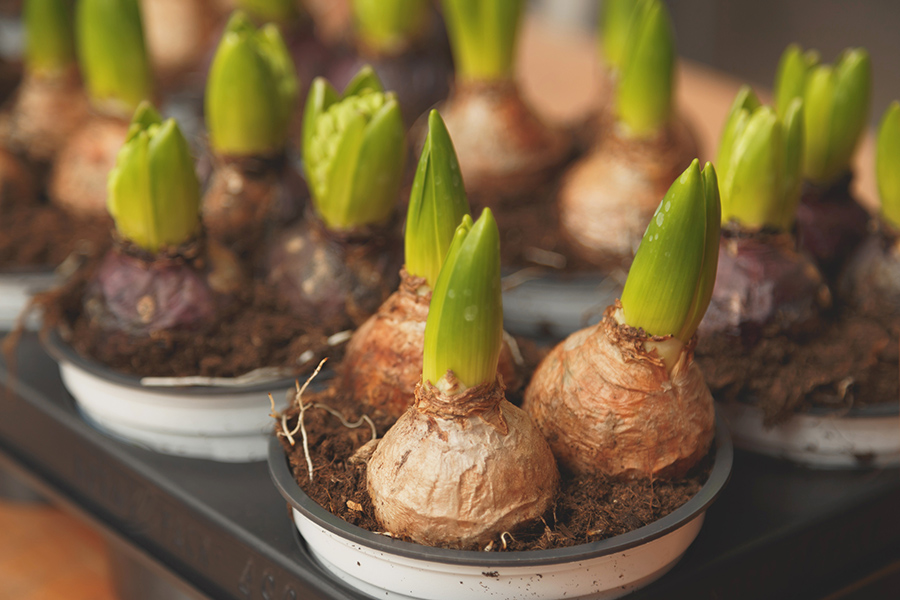The Beauty of Bulbs
Learn all about the beauty of flower bulbs, including how to care for them, the most popular types of bulbs, and more.
Mar 22, 2018
There’s a lot more than meets the eye when it comes to flowering bulbs. Also known as “packaged plants,” a flower bulb is a circular mass that contains food and tissue (it looks like an onion!). In layman's terms, it’s a self-contained flower factory, with everything a flower needs to grow held right there in the bulb.

8 little-known facts about bulbs
- Though almost all bulb flowers bloom in the spring, they should be planted in the late fall, before the first hard freeze.
- Without a few cold months to sleep and set, certain bulbs can’t bloom. (Sorry to those of you in perpetually sunny Florida and California — but, on the bright side, we deliver!)
- Tulips, arguably the most popular bulb flower, have been around for centuries, far longer than some other spring flower favorites. Tulips were first found sprouting in the valleys and mountains of West Asia, where temperatures range from sweltering hot to ice cold.
- Speaking of tulips, tulip bulbs were more valuable than gold in 1600s Holland. This was during the height of tulip mania.
- Though we don’t suggest trying it, some recipes still found today say you can substitute tulip bulbs for onions.
- If you’re in the market for bulbs, always choose the largest, hardest ones — those are the healthiest.
- Some bulbs have what appears to be two "heads," or points. These bulbs will sometimes sprout two flowers.
- Several flowers that bloom from bulbs, including tulips, are known for being almost perfectly symmetrical.
4 reasons bulbs are so beloved
Why are bulbs, especially when compared to seeds, held in such high regard? The answer lies in their beauty, simplicity, and variety.
1. They’re easy to care for
Because bulbs store most of what a plant needs in order to grow, people often refer to the care they need as “dig, drop, done.” This makes them an excellent gift for those new to gardening or who don’t have much time on their hands. Just remember to always plant with the point up unless the bulb has two points (this is rare)! The tip should not be more than an inch to an inch and a half below the soil line.
2. They’re stunning
Don’t let their easygoing nature fool you — the flowers that sprout from bulbs are completely out of the ordinary and exquisite. Some of your favorite flowers, such as tulips, lilies, hyacinths, daffodils, and canna, come from bulbs, and there’s a good chance you didn’t even realize it!
3. Their variety is seemingly endless
Both in looks and durability, bulbs are incredibly versatile. Whether your garden sits in the hot California sun or under the clouds of upstate New York all day, there are bulbs on the market to suit any garden type.
4. They last for years
Once planted, flowering bulbs can return year after year, as long as the foliage is left to yellow after the flower has faded.







